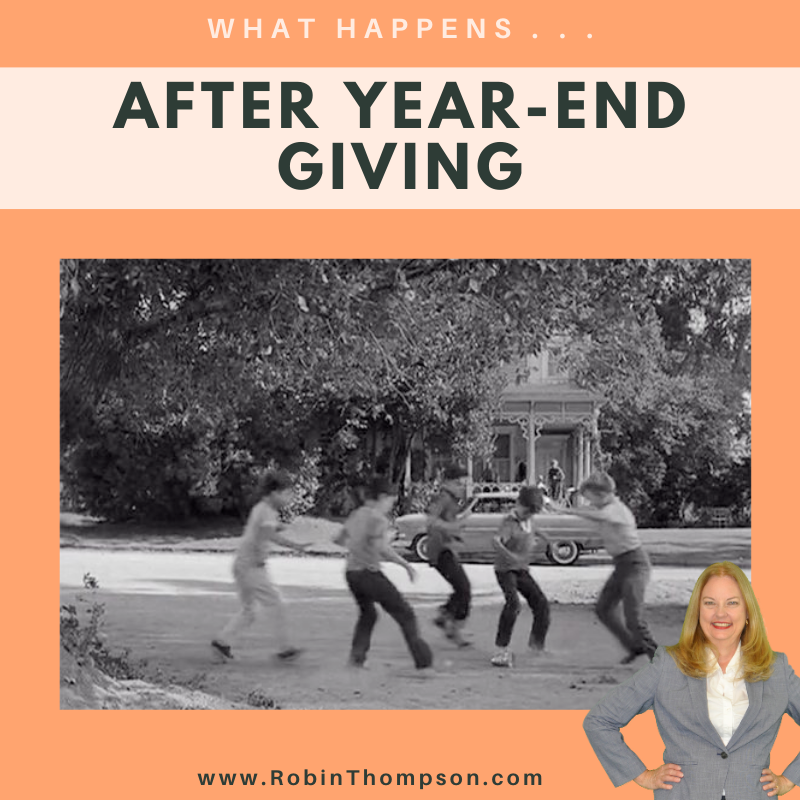
Join the Vail Daily for this interview with Robin Thompson, MS Certified Professional Nonprofit Fundraising Consultant and Trainer.
Q1: How do I select which nonprofit to support?
A: A good resource is the Eagle County Gives website which has stringent requirements through Colorado Gives. If a nonprofit is not included, do your due diligence by searching Guidestar or Charity Navigator. Also, get involved by volunteering and learning more about the organization. Learn what skills the nonprofit needs and see if your experience and desire matches them.
Q2: How much money should I give to a nonprofit?
A: Ask the nonprofit about their needs. They may have a special project or a matching campaign where your gift will be doubled or tripled. For most nonprofits, any amount that you give will make a difference. So, don’t hesitate to give even if you think your gift may be too small to matter.
Q3: What assurance do I have that the money I donate is being used for what I intended?
A: When giving money to a nonprofit, you can choose if your gift is to be “unrestricted” or “restricted.” Many times, nonprofits benefit more from an unrestricted gift because they can use it for their most critical needs. However, if you want to designate it for a specific project like a program or piece of equipment, tell the nonprofit your desire to restrict it. Keep an open mind if they say that their greatest need is something else.
Q4: What makes a good board member?
A: Someone who believes in the mission and is willing to do whatever the organization needs. I look for a person who will introduce people to the nonprofit, get involved, give or get money, volunteer their time and be an advocate for the organization. First and foremost, the board of directors is responsible for carrying out the mission of the organization. The board has a fiduciary responsibility to make that happen. If the board isn’t 100% committed through giving of their time, treasure and talent, why would anyone else want to give?
Q5: Are there any standard ethical guidelines that professional fundraisers use?
A: Yes, the fundraisers code of ethical standards was created in 1964 by the Association of Fundraising Professionals. All fundraisers and nonprofits should have it displayed prominently in their offices, available on their website and in proposals.
Q6: Is Planned Giving important for nonprofits?
A: “If we aren’t talking to every one of our donors about Planned Giving, we are committing fundraising malpractice,” said Jeffrey Byrne, a fundraising consultant. I’ve helped 30-year olds put a nonprofit organization in their estate plans and have talked to a 98-year old couple about it as well. You are never too young or too old to think about how you can continue helping a nonprofit by designating them in your estate plan which will continue to support them long after you are gone.
Q7: How can a nonprofit know the profile of their ideal donor?
A: There are companies who can help determine who is a most likely donor based on who has given to your organization. I generally look in the database to determine the profile of existing donors and then create an “Avatar” that represents people like them. That helps in finding candidates with whom to build relationships with and eliminates unwanted snail mail and emails to people who are not interested in your mission.
This interview continues at: www.RobinThompson.com/blog??. Contact her: 541-810-1109 or fundraiser@RobinThompson.com. Her book, Putting the Fun in Fundraising: How to raise more money faster and easier, will be released in January 2020. It explores each of these areas in more detail. Reserve you copy now at www.RobinThompson.com.
Q8: What is the best way to ask for money?
A: Just do it! But only after you have created a relationship. I have a 10-Touch Model that I use. The biggest mistake fundraisers make is asking for money before they have developed a relationship with the person.
Q9: What is the secret to being awarded a grant?
A: Being very clear about your mission before applying for the grant. I have seen grants written because the nonprofit saw a huge influx of cash if they received the grant. But it was mission creep. Then after they were awarded the grant, they had to determine how to put the program into place and how to find the funds to sustain it.
Q10: What is an endowment?
A: An endowment is an amount of money that is invested for a specific purpose. For instance, it could be for operating expenses, scholarship or a specific program. The corpus, original amount that is invested, is typically not touched, but each year the interest income is distributed to the nonprofit. The larger the investment, the more money the nonprofit receives. An endowment campaign can be part of your annual fundraising campaign or a comprehensive campaign. The best way to establish it is through estate or planned gifts.
Q11: When is it a good idea to establish an endowment?
A: I don’t usually suggest that a nonprofit focus on an endowment if they are a new 501(c)3, have debt or if they are struggling to pay the bills to keep the lights on. If it is a new nonprofit the focus should be on getting the nonprofit established. If there is debt, secure a steady stream of donations before considering an endowment. Given that all of those are taken care of, get your endowment established and start raising money for it.



